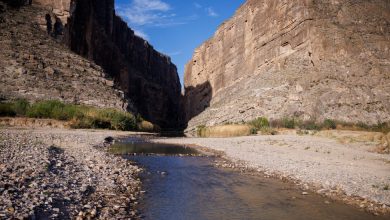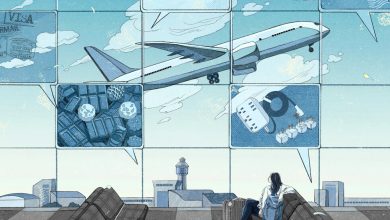Has the Pandemic Undermined Off-Season Deals?

Last February, I searched for a vacation rental in Door County, the wayward spear of Wisconsin that juts into Lake Michigan, for an early May getaway, confident I had beaten the summer rush to the popular vacation spot. But Airbnb occupancy calendars for lovely converted farmhouses and log cabins were already full and when I called a local vacation home rental agency, the agent said they were almost completely booked through the summer. That’s how I ended up in a one-bedroom shack last spring with a wobbly card table in an ant-infested kitchen and a new awareness of the shrinking off-season.
From Miami to communities around national parks like Zion in Utah and Joshua Tree in California, high-occupancy rates during traditionally off-season times of the year are muddling what was normally a reliable way to save money — traveling when few others are.
Continued work-from-anywhere policies have freed travelers from their homes, and as they have flocked to places like Jackson Hole, Wyo., and the Florida Keys, lodging rates have soared.
In 2020, a survey from Booking.com found that 58 percent of American travelers were more likely to travel during off-peak seasons — to avoid crowds and the risk of contracting or spreading Covid-19 — than they were before the pandemic. In 2021, it found the sentiment grew: nearly seven in 10 travelers said they would choose an alternative destination in order to avoid peak season.
“Most of the demand in 2021 was leisure-driven,” said Ali Hoyt, the senior director of consulting at STR, which tracks the hospitality industry, noting that stimulus money helped satisfy pent-up demand for vacations and social gatherings in resort destinations. “People showed that once they were vaccinated, they were ready to travel.”
Seasonality isn’t the only factor affecting rates, of course. The hiring shortage has made finding hotel employees harder, which might mean limiting the number of rooms available or paying new staffers more, thus increasing costs that may be passed on to travelers. Occupancy caps also curtail availability, and inflation and delivery issues have driven up prices for supplies that hotels use, from food to cleaning products.
But even with those caveats, in many popular resort areas, more travelers means higher rates.
The endangered shoulder season
During the pandemic, American leisure travelers favored outdoor destinations in coastal regions and mountain towns.
Aspen, Colo., smashed records for summer high-season occupancy in July at nearly 88 percent, and for the off-season month of September, occupancy was at 69 percent, 20 percent over 2019.
Jackson Hole has also been busy throughout the pandemic, helped by the migration of urbanites to rural areas, according to local reports.
“Covid accelerated things for Jackson,” said Sadek Darwiche, the co-owner and general manager of Hotel Jackson downtown. The formerly slow months — October, November, April and May — saw a spike in visitation, nearly doubling prepandemic norms last October.
“Shoulder season, in 2022, might be gone in Florida, Hawaii and at the big national parks with many top destinations seeing double-digit hotel demand increases in January and February,” wrote Christie Hudson, a spokeswoman for Expedia Group, in an email, noting that many of these areas exceeded 2019 lodging figures.
Most hotels charge more when demand allows. For The Westin Cape Coral Resort at Marina Village in Cape Coral, Fla., more visitors in the normally slow summer and mostly steady traffic otherwise pushed rates on average 10 percent above 2019 levels.
At Gurney’s Montauk Resort & Seawater Spa in the Hamptons, the surge was more dramatic as urban exiles drove the off-season nearly to extinction, according to George Filopoulos, the owner of the resort. There, average nightly rates in the normally quiet month of December climbed from $368 in 2019 to $486 in 2020 and $524 this year.
One of the busiest hotel markets, according to STR, was the Florida Keys, where average daily rates grew from about $272 in 2019 to $380 in 2021 as of November, or nearly 40 percent.
“Mid-February last year, we saw a spike in demand and it has not stopped,” said Stacey Mitchell, the tourism council director for the Florida Keys.
Of course, many destinations have been working hard to shrink the off-season. Door County, for example, has a popular half-marathon in early May, and in 2021, it added a Christmas market in late November and early December to attract visitors at traditionally slower times.
Weekdays are the new off-season
In many places, the new bargain “season” is the weekday.
“As a result of the pandemic, we have seen a new ‘shoulder season’ emerge that isn’t geography specific, but rather weekday specific,” wrote Kathleen Reidenbach, the chief commercial officer for Kimpton Hotels & Restaurants in an email, noting that weekends continue to be busy.
In the United States, according to Expedia, the lowest average daily rate tends to occur on a Monday, which is priced about 15 percent less than Friday, the most expensive day.
Monday deals aren’t hard to find. In California’s Santa Ynez Valley on the central coast, about a two-hour drive from Los Angeles, the tourism bureau is offering a Midweek Membership Club promotion, through which visitors who book a two-night midweek stay, Sunday through Thursday, gain access to discounts and vouchers for restaurants, wine tastings and more, through March 31.
At the Sanderling Resort on North Carolina’s Outer Banks, to get the lowest $187 nightly rate, versus $569 in the summer high season, you’ll have to visit midweek, January through April. Weekend rates during that period start at $237.
According to the Outer Banks Visitors Bureau, visitor numbers were up nearly 174 percent in January 2021 compared to January 2020. “Most coastal destinations are doing very well right now, and will continue to do so until the world opens back up for business,” said Jake Hatch, the director of sales and marketing at the Sanderling. “Off-peak seasons are growing rapidly and peak seasons are booking up faster than ever, driving rates across the board.”
Where the buys are
High-season creep, of course, varies from place to place. Lodgings in some destinations are still dangling attractive rates to lure travelers when things are quiet, particularly in big cities, which continue to suffer from a lack of business and group travel.
In Chicago, comparing year-to-date figures for November, rooms were down $26 from 2019, averaging $121 in 2021, according to STR.
For travel in January and February, Expedia recommends cities like Atlanta, San Diego, San Francisco, Seattle, Portland, Ore., and Denver for sub-2019 rates. Its affiliate vacation home rental platform Vrbo reports at least 70 percent availability on rentals in Asheville, N.C.; Tillamook, Ore.; and the Pocono Mountains in Pennsylvania in February and March.
Among beach destinations, seasonality hasn’t changed much in Myrtle Beach, S.C., according to EOS Hospitality, which manages nine resorts there. For best buys, Gaurav Sharma, the executive vice president of revenue and distribution for the company, recommends the first and last quarter of the year when occupancy typically runs about 50 percent and rates start at $99.
Off the coast of Southern California, Catalina Island hotels are bundling rooms with passage on the Catalina Express ferry plus other perks through March 25. The Bellanca Hotel throws in taxi transfers and a bottle of wine from $299 a night, and the Hotel Catalina includes morning coffee and dining discounts from $83.50 a person.
Bermuda, where summer is high season, is holding a sale through Feb. 6 at up to 50 percent off 12 resorts. Some of the deals exclude summer travel, but others extend to year end.
Though the off-season is shrinking, it hasn’t entirely vanished. Even destinations with few rate dips say the period between Thanksgiving and Christmas is a good time to look for value.
The new normal, for now
Though the Omicron variant has clouded predictions about where and how much people will travel, off-season travel appears to be here to stay, at least domestically.
AirDNA, a consultancy that analyzes the short-term rental market, said U.S. vacation rentals exceeded 2019 results by more than 2 percent in 2021. The firm projected they will grow another 14 percent in 2022.
Recreational vehicle rentals are up at normally down times, too.
“We expect increased demand for shoulder season bookings to become a new normal as more companies and individuals embrace geographic flexibility in their work,” said Jon Gray, the chief executive of RVShare, a platform for renting R.V.s from their owners.
Eventually, when business and group travel pick up, the off-season may spring back.
“The boom in leisure travel will be hard to maintain,” said Ms. Hoyt of STR, noting that the stimulus-funded spree may give way to the usual highs and lows of seasonal travel.
Elaine Glusac writes the Frugal Traveler column. Follow her on Instagram @eglusac.
Follow New York Times Travel on Instagram, Twitter and Facebook. And sign up for our weekly Travel Dispatch newsletter to receive expert tips on traveling smarter and inspiration for your next vacation. Dreaming up a future getaway or just armchair traveling? Check out our 52 Places list for 2022.





